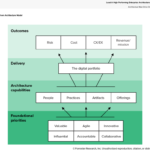Taxes and regulations impact your bottom line as an investor—and not always in direct or obvious ways. Unfortunately, as soon as you start talking about either one, the average person closes their mind, circling the wagons around their existing worldview and only hearing data points that support it. Look no further than this Yale study, which shows that people perform worse on math problems if the correct answers conflict with their political ideology.
I’ll get it out of the way now: I find both major political parties reprehensible and hypocritical. I’ve voted for each roughly equally over my life.
Now, let’s get back to real estate investing.
Taxes and Population Change
Population drives demand for real estate, and a shrinking population poses a major problem for real estate investors. Identifying population shifts, therefore, matters to real estate investors—a lot.
There’s been a narrative over the last few years that more Americans have started voting with their feet and leaving higher-tax states in favor of lower-tax states. Is it true?
I started by pulling raw data from the Census Bureau. I then mapped population change for all 50 states:
Investment analyst Ben Reynolds of SureDividend.com pointed out to BiggerPockets a few much-discussed examples: “Texas and Florida are two of the fastest-growing states by population. Not coincidentally, they offer a compelling mix of no state income tax and less cold climates compared to most other states.”
That raises the question of comparing population change to state taxes. Fortunately, that data is also readily available.
Tax Burden by State
Every year, WalletHub ranks every state by its total tax burden, which includes state income taxes, property taxes, and sales and excise taxes.
Surprising no one, New York took the top spot with the highest tax burden (12.02% of income for the average resident). New York also lost nearly 102,000 residents last year.
That’s just one state, of course. Let’s look at states with a population loss last year:
- California
- Hawaii
- Illinois
- Louisiana
- New York
- Oregon
- Pennsylvania
- West Virginia
How did they rank on tax burden?
The average tax burden ranking for these states is 14. In fact, only one of these states was ranked above the median of 25, and then just barely: Louisiana has a tax rank of 27.
So yes, there is a clear correlation between tax burden and population change. And yes, I also hear all you skeptics out there objecting that “correlation does not indicate causation.” Go ahead and cling to that if it helps reinforce your existing worldview that taxes play no role in people’s decisions about where to live.
I’m not saying taxes are the only or even the most important factor in where Americans move. Surveys about moving trends list many stated reasons for moving. But taxes appear to play a role in the calculations—especially for wealthier Americans.
“Higher-net worth individuals are most likely to move to states with low or no income tax,” said Alexandra Alvarado of the American Apartment Owners Association in a conversation with BiggerPockets. “It may not be the primary reason they are making the move in the first place, but it does influence which states they are moving to. Also, companies that are moving their headquarters to lower tax states also influence migration patterns, as their employees tend to move with them.”
And that says nothing of the state and local taxes you pay directly as a property investor—taxes that eat into your returns on investment. While you can’t avoid federal taxes, you can pick and choose the states and cities where you invest—and their respective tax policies.
Anti-Landlord Regulation
People love to hate landlords. I’ve never understood this: The same activists who cry out in righteous fury that there’s not enough affordable rental housing are the very ones who rail against “greedy” landlords—the people who supply rental housing.
In some cities and states, these activists have enacted regulations that heavily favor renters over landlords. Back when I used to buy properties directly, I operated in Baltimore, one of the most tenant-friendly jurisdictions in the country. It once took me 11 months to get a nonpaying “professional tenant” out of my rental property.
In our group real estate investing club at SparkRental, we focus first and foremost on managing risk. Every month when we get together to vet a new investment, we look at risks like debt, construction, property management, and regulation.
Regulatory risk matters. If it takes two months to remove a nonpaying tenant in one market and 10 months in another, it adds risk and cost to invest in the tenant-friendly market.
Look no further than the pandemic-era eviction moratoriums. Tenant-friendly markets extended moratoriums long after the federal moratorium expired, making lease contracts one-way enforceable for years. Many renters lived for free for several years, letting their landlord pay the mortgage and maintain their home while they milked every moment of free rent.
And now that the precedent has been set, these jurisdictions can play the same card again the next time a “crisis” arrives.
Therefore, anti-landlord regulation adds risk to your investment. Hard stop.
Do I Shun These Cities and States?
I’m no political crusader. I’ve invested in markets with high taxes and tenant-friendly regulations. But I’m more cautious when I do so because it adds expense and risk.
In particular, I try to avoid multifamily investments in areas with anti-landlord regulations. That doesn’t mean I avoid all real estate investments there, however.
Take Southern California. Our passive real estate investing club got together a few months back to vet a property with 11 short-term rental cabins on it. The cabins were in an unincorporated mountain town 90 minutes outside of LA, which relies on tourism to survive. We felt extremely confident that there was no risk of short-term rentals being outlawed, and the cabins don’t allow long-term stays.
Yes, California has tenant-friendly laws. But they don’t affect that property, and we felt comfortable making that investment together.
Likewise, we consider industrial, retail, and storage properties in areas with anti-landlord regulations. We even consider mobile home parks with tenant-owned homes in these markets.
Final Thoughts
But if I’m going to invest in a multifamily property in a high-tax, anti-landlord jurisdiction, I expect the deal to make up for it elsewhere with lower risk than usual.
You invest however you like with your money. But when you evaluate risk, ignore these factors at your money’s peril.
Ready to succeed in real estate investing? Create a free BiggerPockets account to learn about investment strategies; ask questions and get answers from our community of +2 million members; connect with investor-friendly agents; and so much more.
Note By BiggerPockets: These are opinions written by the author and do not necessarily represent the opinions of BiggerPockets.









